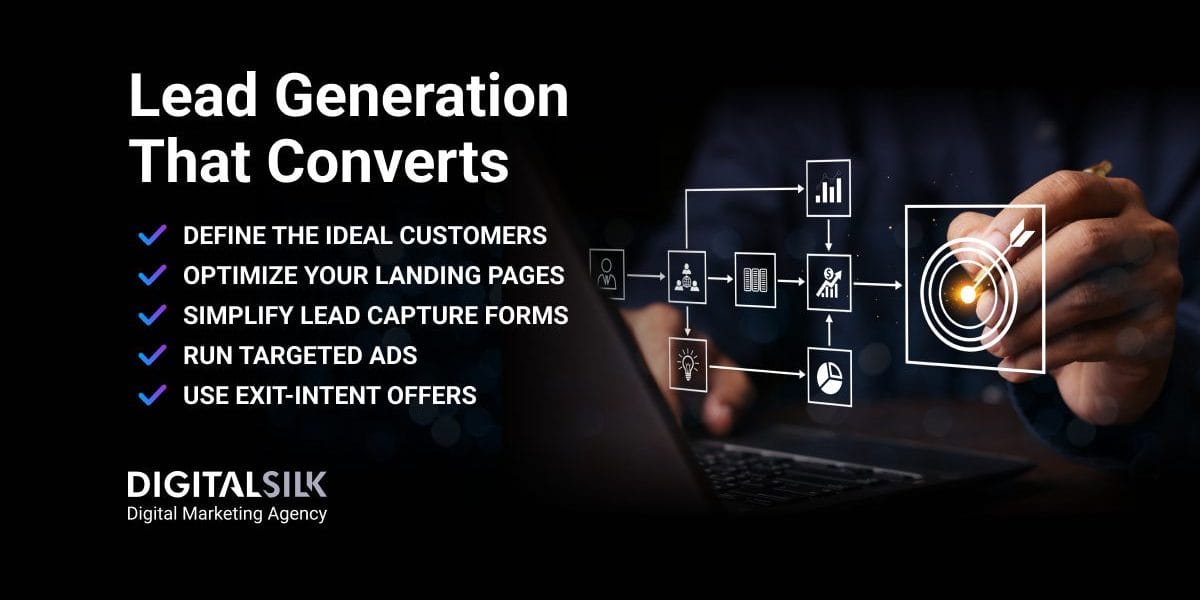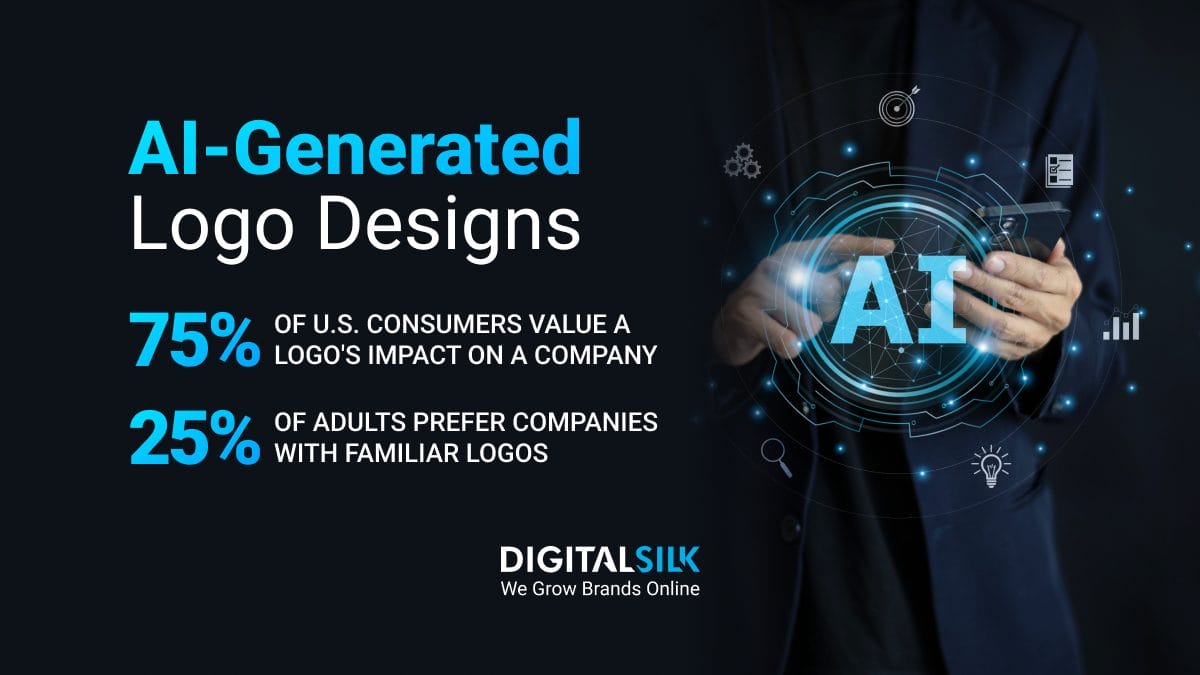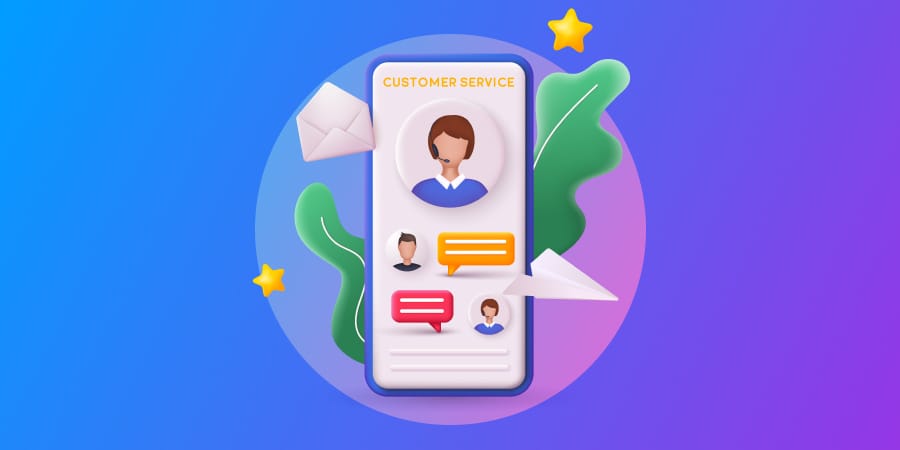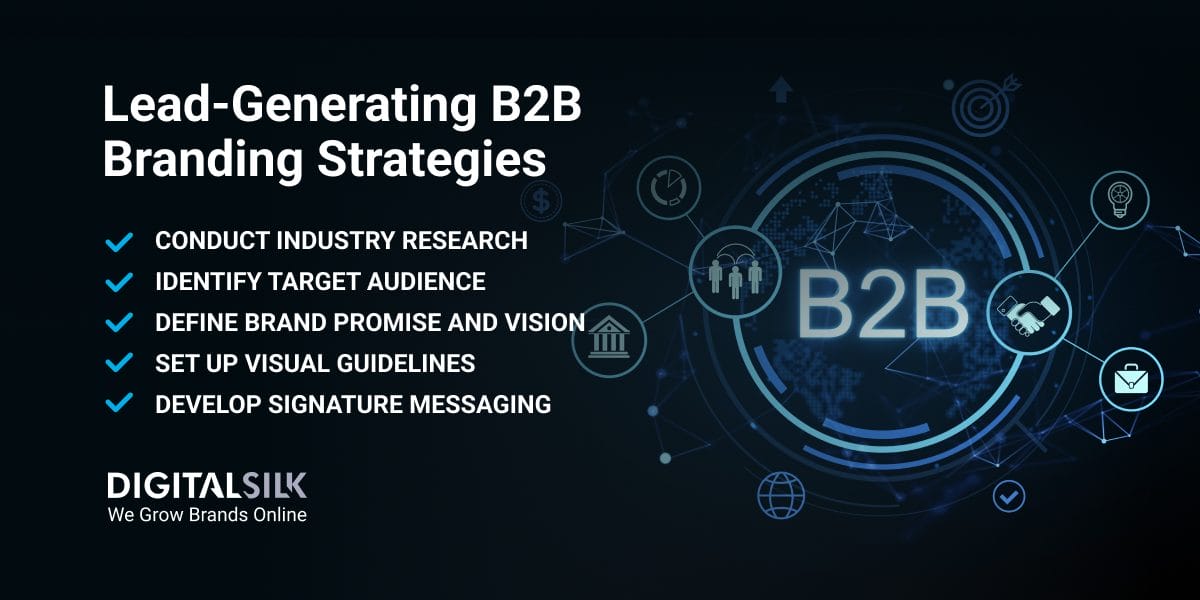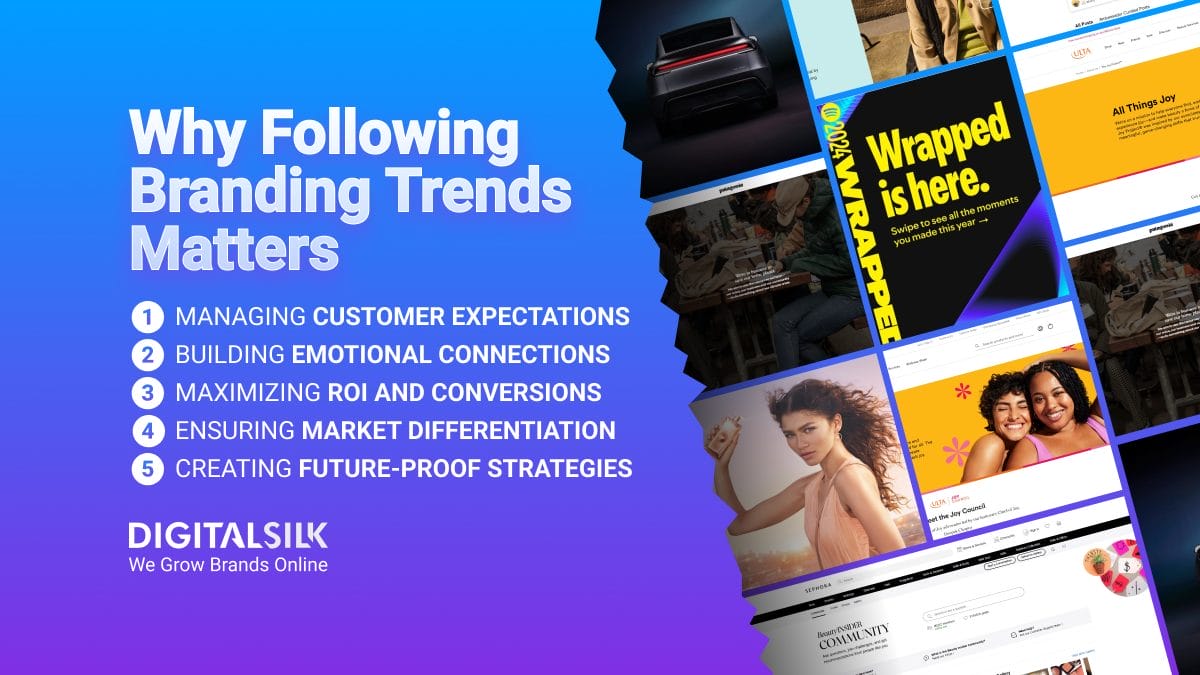Lead Generation Strategies: Key Highlights
-
Strategic targeting drives qualified growth: Clear personas and ICPs align teams and focus efforts on high-potential leads.
-
Optimized touchpoints increase conversions: Streamlined landing pages and forms reduce friction and drive action.
-
SEO and content attract high-intent demand: Search-driven, valuable content brings in ready-to-buy prospects.
What drives sustainable growth in today’s market?
For many high-performing companies, it comes down to a sharp, strategic focus on acquiring new business.
In fact, 22% of CEOs and CMOs cite lead generation as their top priority for the next 12 months — second only to customer retention.
In this post, we’ll share 11 proven lead generation strategies to help you attract, engage and convert high-quality leads that fuel long-term value.
1. Define And Target Your Ideal Customer Profile
71% of consumers now expect brands to tailor their experience.
That expectation doesn’t just apply to ecommerce or retail — it’s shaping how business leaders engage with vendors, partners and service providers.
If your outreach still speaks to everyone, it’s likely connecting with no one.
Creating Buyer Personas
Your buyer persona represents a detailed profile of your ideal customer built from market research and existing customer data.
Unlike basic demographic information, these profiles dive deeper into behaviors, decision-making patterns and value systems that drive purchasing decisions.
There are two approaches you can take to create effective buyer personas.
Collect data from multiple sources:
- Direct customer interviews and feedback
- Website analytics and CRM insights
- Targeted surveys and market research
- Social media engagement patterns
Document essential details:
- Demographics (age, location, job title)
- Purchasing behaviors and patterns
- Values, interests and lifestyle indicators
- Specific pain points and goals
- Professional context (for B2B markets)
Using Data To Define Ideal Customer Profile (ICP)
While personas focus on individual decision-makers, your ICP describes the perfect organization that would benefit most from your solution.
This profile acts as your strategic roadmap for identifying and prioritizing high-potential accounts.
To build a data-driven ICP:
- Analyze your best customers: Examine your most successful accounts based on revenue, retention rates and referrals
- Gather firmographic data: Industry, company size, location, revenue
- Collect technographic insights: Tech stack, IT budget, digital maturity
- Identify behavioral patterns: Buying cycles, decision-making processes
- Document specific challenges: Problems your solution directly addresses
By leveraging these data-driven insights, your sales and marketing teams can focus on high-value accounts with the greatest conversion potential, craft personalized messaging that resonates and significantly shorten the sales cycle.
| Feature | Buyer Persona | Ideal Customer Profile (ICP) |
| Primary Focus | Individual decision-makers or users | Target organizations or accounts |
| Data Source | Behavioral insights, interviews, CRM, surveys | Firmographic, technographic and sales data |
| Purpose | Personalize messaging and content | Identify and prioritize high-fit accounts |
| Ownership | Primarily used by marketing | Shared by marketing and sales |
| Application | Tailors campaigns to resonate with specific people | Shaepes targeting, outreach and go-to market strategy |
Why Targeting Matters
Generalized outreach is easy — but expensive.
When your teams try to speak to everyone, they often miss the people who are actually ready to buy.
Targeting forces clarity: who’s worth pursuing, how to reach them and what matters most to them.
Targeted lead generation sharpens more than marketing — it aligns teams around shared priorities and delivers tangible results, such as:
- Smarter strategy: Messaging is clearer and more relevant when it’s built for a specific audience.
- Better resource allocation: Teams focus on leads with the highest potential instead of chasing volume.
- Faster sales cycles: Reps spend less time qualifying and more time closing.
- Greater commercial alignment: Sales and marketing stay focused on the same types of accounts.
- Stronger buyer experience: 51% of marketers say personalization improves the customer experience, which starts with knowing who you’re personalizing for.
The result? Less guesswork, fewer wasted conversations and more time spent with the right prospects.
2. Optimize Your Landing Pages
Your lead generation strategy hinges on how well your landing pages perform.
These pages aren’t just supporting content — they’re decision points that either move prospects forward or lose them.
Sites with 10–15 landing pages generate 55% more leads than those with fewer than 10, yet many companies underinvest in them.
Landing Pages Best Practices
Your website educates, but landing pages are built to convert.
On average, landing pages across all industries convert at 6.6%, but top performers exceed that by making every element purposeful and clear.
To improve performance:
- Maintain message consistency: The landing page should reflect the offer and tone of the ad or email that led visitors there.
- Remove distractions: Eliminate navigation and secondary links to keep the focus on your primary call-to-action.
- Prioritize above-the-fold clarity: Make sure your value proposition and calls-to-action (CTAs) are visible without scrolling.
- Use visual cues: Arrows, layout structure and product imagery can guide attention toward the next step.
- Improve load speed: 70% of consumers say that page speed impacts their purchasing decisions — if your page loads slowly, many won’t stick around long enough to consider the offer.
How To Optimize Landing Pages
43.6% of marketers say lead generation is the primary goal when creating landing pages, yet many still rely on assumptions instead of data.
A/B testing offers a straightforward way to change that.
By comparing different headings, layouts, or CTAs, your team can move from guessing to knowing what actually drives conversions.
Key areas to test:
- Headlines and body copy: Clarity, tone and positioning can significantly affect engagement.
- Call-to-action buttons: Try different wording, placement and visual weight.
- Page layout and structure: Even small shifts in visual hierarchy can improve focus and flow.
- Urgency triggers: Countdown timers and real-time activity indicators can prompt faster action.
For instance, Calm’s homepage doubles as a landing page with a singular focus: prompting visitors to start a free trial.
It features minimal copy, an immediate CTA above the fold and soft visuals that reflect the product’s core value — relief from stress and anxiety.
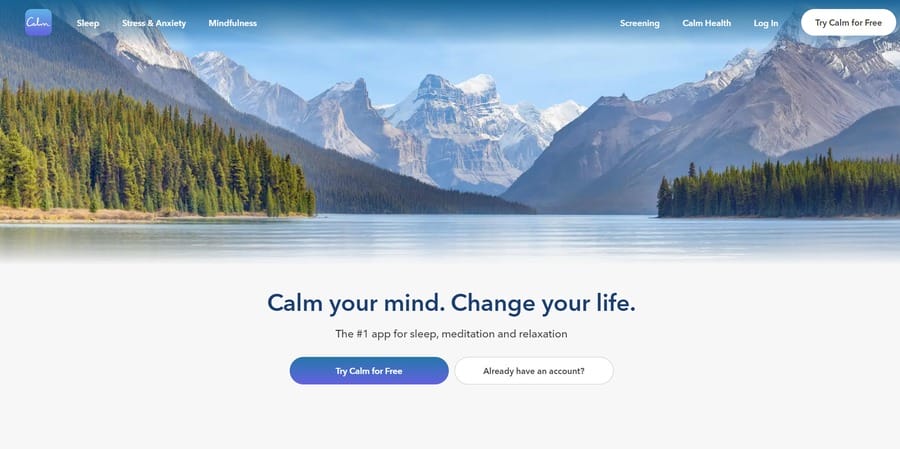
3. Simplify And Improve Lead Capture Forms
Lead capture forms turn interest into intent, but that exchange only happens if the process feels clear and worthwhile.
79% of customers say they’re willing to share relevant information in exchange for interactions where they feel known and understood — but they’ll abandon forms that feel confusing, long or impersonal.
Lead Capture Form Design
Structure guides behavior — single-column layout creates a smoother user experience than multi-column formats, guiding users to the desired action.
Some lead-generating design tips that matter include:
- Use white space to improve readability
- Stick to the basics — name, email and job title are often enough for B2B
- Avoid long text fields and label everything clearly
- Ensure the form visually fits with the rest of the page
For instance, Retool’s demo request page features a clean, focused layout with a short form that asks for work email, location, company size and the reason for submitting the request.
The value proposition is clear and immediate — visitors know they’re signing up for a personalized product demo, making the form feel purposeful and worth completing.

Lead Capture Form Conversion Tips
Your call-to-action button deserves special attention.
Forms with generic “submit” text perform worse than those with action-oriented language.
To continuously improve your forms:
- Test different elements (length, field types, button colors) to determine what resonates with your audience
- Send automated follow-up emails immediately after submission to maintain engagement
- Pre-populate data from social media or previous interactions
- Use progress indicators in multi-step forms to show users how far they’ve come
4. Use SEO To Attract High-Intent Visitors
53.3% of all website traffic comes from organic search, yet many companies still underinvest in it.
SEO isn’t just about visibility — it’s about attracting the right people at the right time.
SEO For Lead Generation
Organic traffic captures users who are actively searching for answers or solutions, which gives it a built-in advantage.
Inbound SEO leads close at 14.6%, compared to just 1.7% for outbound leads.
Strong SEO helps you:
- Earn trust by showing up in unbiased search results
- Create a steady pipeline without ongoing ad costs
- Reach decision-makers when interest is highest
High-Intent Keyword Targeting
High-intent keywords reflect urgency, decision-stage behavior or specific pain points — and they tend to convert significantly better than broad, generic search terms.
These are the types worth targeting:
- Competitor-based queries: “Salesforce alternatives,” “HubSpot vs Zoho”
- Category-specific terms: “best CRM for SaaS startups,” “email automation tools for B2B”
- Problem-driven searches: “how to reduce customer churn,” “struggling with email deliverability”
- Action-based modifiers: “book a demo,” “get a quote,” “buy now,” “hire a PPC agency”
Look for commercial intent and context over raw search volume.
It’s not about being everywhere, but about being in the right place when your ideal customer is searching.
SEO Content Strategies
Businesses that blog get 55% more website visitors on average — but the ones that generate real leads go further than publishing generic articles.
High-performing SEO content answers the questions your buyers are already asking, in the way they want them answered.
The most effective content formats for digital lead generation include:
- Product-led pieces that walk through real use cases or problem-solution stories
- Comparison articles that help buyers weigh options and make confident decisions
- Alternative-focused pages that capture searches for competitors and frame your strengths
- Transparent pricing and review content that speaks to late-stage buying intent
This kind of content does more than rank. It builds authority, shortens the sales cycle and brings in leads that already understand what you offer — and why it fits.
5. Offer Free Trials Or Downloadable Resources
Free resources — whether product access or content — offer a direct path from interest to engagement, giving prospects something useful upfront while giving your team qualified data in return.
Free Trial Lead Generation
Free trials do more than fill your CRM.
They give prospects a chance to test drive your product on their terms, which builds confidence faster than any sales pitch.
This works especially well for SaaS and subscription models, where early product experience heavily influences buying behavior.
The most effective trials minimize the necessary steps — no credit card required, clear onboarding and a focus on what users can accomplish during the trial window.
It’s not about showing every feature — it’s about letting someone experience early value without commitment.
For example, Later’s 14-day free trial landing page keeps the focus on ease and immediacy, with a simple headline, minimal form fields and no credit card required.
It highlights key benefits upfront — like scheduling and performance tracking — making the value clear before users even sign up.
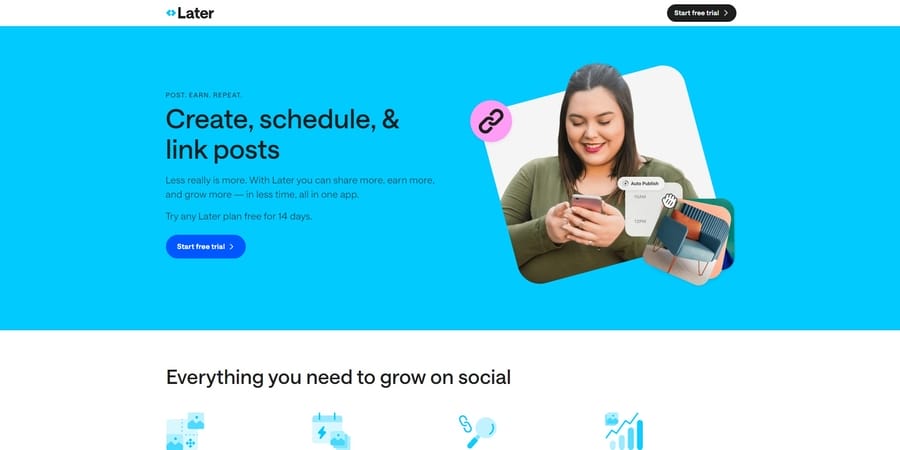
Lead Magnets And Downloads
Downloadable content still performs — when it’s useful, focused and easy to apply. But expectations have shifted.
People no longer want long-form content for the sake of volume. What they want are fast answers to relevant problems.
Formats that earn attention include:
- Guides and checklists that deliver clarity in one sitting
- Templates and toolkits that help users start or solve something right away
- Mini-courses that show real-world expertise without fluff
Digital Silk’s free Rebranding Checklist Template fits the lead magnet strategy perfectly — it’s a focused, ready-to-use resource that helps teams rebrand without getting bogged down in complexity.
Rather than offering high-level theory, it delivers practical steps in a clear, checklist format that’s easy to apply and digest from the moment it’s downloaded.
Conversion-Focused Strategies
Strong offers are built around a clear outcome. That’s what differentiates a download that gets filled out from one that’s ignored.
To improve conversion rates, focus on:
- Specificity: “10 examples of onboarding flows” outperforms “Tips for user engagement”
- Clarity: Don’t just say what it is — say what someone will walk away with
- Timing: Pop-ups that appear after engagement outperform those that hit immediately
- Segmentation: A founder needs different insights than a marketing analyst — your content should reflect that
6. Add Live Chat To Engage Visitors
When a visitor is ready to engage, slow response times cost you more than just patience — they cost you pipeline.
Live chat and chatbots give prospects a direct path to answers without the friction of forms or delayed emails.
68% of consumers have used a customer service chatbot, which means expectations around instant communication are already set.
Chatbot Lead Capture
Chatbots have moved well beyond scripted greetings.
They ask qualifying questions, collect contact information and guide users toward next steps — all through a more conversational experience than traditional forms.
Chatbots can optimize lead generation strategies by:
- Asking practical, targeted questions about timeline, budget
,or specific needs - Routing high-intent leads to sales reps in real time
- Scoring leads based on input to help prioritize follow-up
- Capturing details without disrupting the user’s flow
For instance, Peloton’s live chat offers immediate, human-assisted support for visitors exploring products or subscription options — aligning perfectly with a real-time engagement strategy.
By making expert guidance available on demand, Peloton reduces hesitation at key decision points and keeps prospects moving forward.
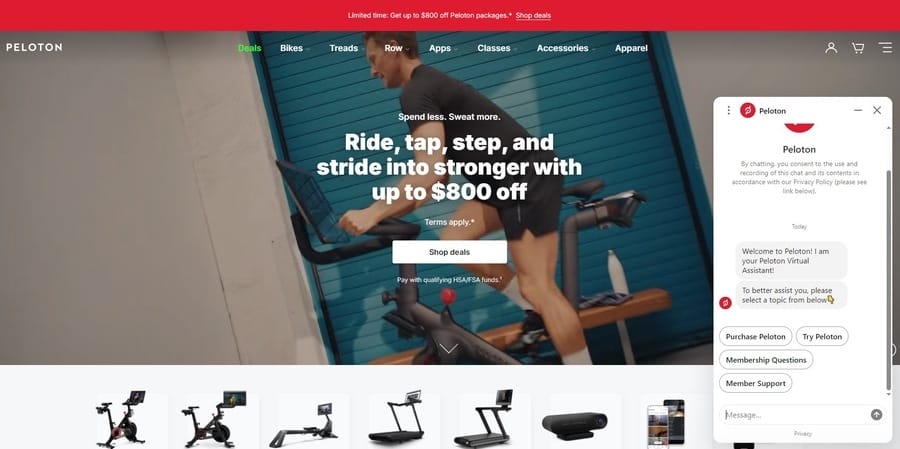
Chatbot Automation Tips
For a chatbot to be useful, it needs to sound human and stay relevant. Start with a simple prompt that connects to why the visitor is there.
Teach it how your product works, what your buyers typically ask and where to guide the conversation next.
To get the most from automation:
- Connect the chatbot to your CRM to store data without manual effort
- Deploy across multiple touchpoints — your website, WhatsApp, Facebook Messenger
- Make it easy to escalate to a real person when the conversation goes deeper
Strategic automation doesn’t replace your sales team — it extends their reach and improves the first impression.
7. Run Targeted Lead Generation Ads
Paid advertising is no longer a side channel — it’s the centerpiece of intent-based marketing.
Global spending in the search advertising market is projected to reach $351.55 billion in 2025, reflecting how much companies are investing to meet prospects at the moment they’re looking for solutions.
Lead Generation Ad Platforms
98% of PPC professionals use Google Ads, not just for reach but because it captures high-intent users at the moment they’re actively searching for solutions.
Platform selection should also account for market reach. LinkedIn gives access to senior decision-makers in B2B settings, ideal for complex or high-value sales cycles.
Facebook and Instagram offer broad reach with granular targeting, useful for scaling demand across multiple segments.
Bing Ads, though smaller, often attracts an older, higher-income audience and sees less competition — useful for reaching overlooked but valuable segments.
The right platform isn’t just where people are — it’s where intent aligns with opportunity.
Ad Targeting Strategies
Strong targeting isn’t just about segmentation — it’s about removing guesswork from your ad spend.
When you build audiences from real behavior and proven buying signals, your campaigns stop chasing impressions and start driving qualified pipeline.
Effective digital lead generation tips include:
- Competitor targeting: Reach buyers who are already comparing similar solutions
- Lookalike and custom audiences: Model new prospects after your highest-value customers
- Behavior-based retargeting: Focus on actions that indicate intent, like pricing page visits
- High-intent keyword targeting: Prioritize search terms tied to decision-stage queries
- Exclusion targeting: Remove low-fit segments or existing customers to avoid wasted spend
8. Use Pop-Ups And Exit-Intent Offers
Pop-ups often feel tactical, but when shaped by behavior and intent, they can recover high-value leads that would otherwise leave unnoticed.
They’re one of the few tools that allow you to respond in real time to user behavior without rebuilding your site or funnel.
Types Of Lead Capture Pop-Ups
The right format isn’t about style — it’s about matching the offer to engagement level.
- Time-based: Appear after a visitor has spent enough time to signal interest
- Scroll-triggered: Activate when users have consumed a meaningful portion of content, showing they’re invested
- Click-triggered: Trigger only when users engage with a key element, offering a seamless experience
- Floating bars: Provide persistent visibility across the site without interrupting reading or navigation
Performance improves when these formats are applied selectively, not universally.
Exit-Intent Pop-Up Strategies
Exit-intent triggers give your team one final opportunity to recover interest before it disappears.
But timing isn’t enough — what you offer and who you offer it to matters just as much.
Some of the most effective lead generation tips include:
- Targeting visitors who’ve demonstrated depth — multiple page views, long dwell time or scroll activity
- Personalizing based on the content they were viewing (e.g. product vs. pricing page)
- Offering something clear and actionable — a free resource, quick consultation or exclusive access
These pop-ups work best when they feel like a natural next step, not a plea to stay.
For example, Pourri’s exit-intent popup offers a straightforward incentive: 15% off in exchange for a name and phone number.
It’s a low friction offer designed to convert abandoning visitors by turning hesitation into a quick win.
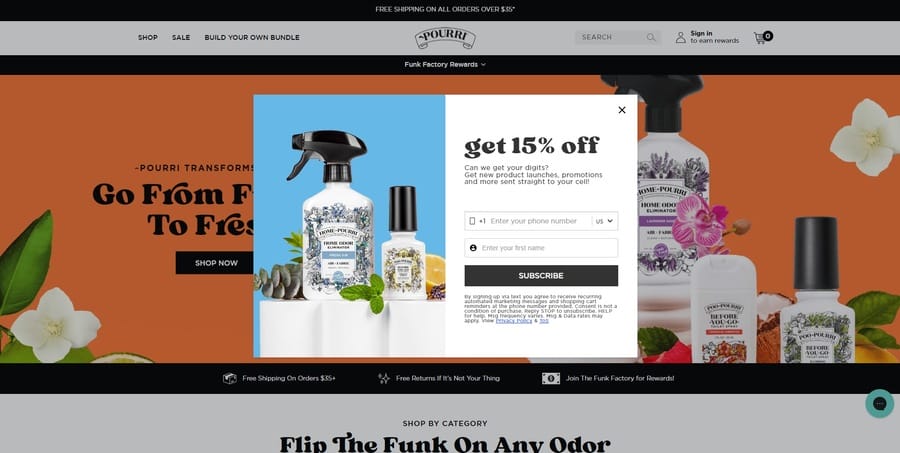
9. Leverage Social Media For Lead Acquisition
5.24 billion people use social media globally, which means your buyers are already there — scrolling, searching and evaluating.
But reach alone isn’t enough. Lead acquisition on these platforms depends on timing, content clarity and how well your offer aligns with what someone actually needs.
Social Media Lead Generation Techniques
The strongest results come from treating social platforms like active sales channels — not just content distribution feeds.
Instead of generic posts, build offers that solve real problems, then make it easy for users to act.
Lead generation strategies worth using include:
- Promote downloadable lead magnets directly in posts or ads
- Run sequential retargeting ads that re-engage users based on where they dropped off
- Launch referral programs that encourage your audience to share on your behalf
- Use social listening to find prospects already asking the kinds of questions your business answers
Effective social campaigns are less about going viral and more about offering something timely and useful to the right segment.
Best Platforms For B2B/B2C Campaigns
Not all platforms serve the same purpose and using them interchangeably leads to diluted results.
Focus where your audience makes decisions, not where they’re just passing time.
LinkedIn is the top choice for B2B lead generation, favored by 44% of marketers, while Facebook leads in B2C with 51% calling it their most valuable platform.
These platforms aren’t just large — they’re structured for intent, targeting and engagement at key points in the buyer journey.
Prioritize platforms where your audience is most likely to take meaningful action, not just where they spend time.
Use formats that match how users interact — lead forms, in-feed CTAs or direct messaging funnels that solve specific issues.
10. Host Webinars Or Virtual Events
Virtual events have become one of the most efficient ways to connect with potential clients — without the overhead or limitations of in-person formats.
They offer reach, flexibility and a direct way to gauge interest based on real-time participation, not just attendance.
Webinars For Lead Generation
Webinars help you move beyond passive engagement.
Participation — through chat, polls or follow-up questions — gives you clear indicators of who’s ready for a deeper conversation and who needs more time.
Use these lead generation best practices to drive better outcomes:
- Choose topics tied to specific business problems your audience is trying to solve
- Include audience interactions every few minutes to keep participants involved
- Use chat to surface objections, questions or buying intent
- Close with a clear offer or resource tied to the webinar content
Event Follow-Up And Marketing
The follow-up phase is where momentum turns into pipeline.
54% of U.S. users open marketing emails when the offer aligns with their interests, so personalization based on behavior is key.
Use these lead generation strategies in digital marketing to tailor your follow-up approach:
- Prioritize outreach to attendees who asked questions or showed strong engagement
- Offer decision-makers clear next steps or relevant resources
- Guide less-engaged participants into nurture flows with lighter-touch content
Repurpose the webinar into smaller assets — clips, quotes, summaries — to extend the shelf life and reinforce your positioning as a go-to source for insight.
11. Incorporate Customer Reviews And Testimonials
Prospects want real stories from customers who’ve faced similar challenges and got measurable outcomes.
Testimonials give your brand credibility you can’t manufacture in-house, since they influence decisions in ways marketing copy can’t.
Using Reviews For Trust
49% of consumers trust reviews as much as recommendations from friends or family, which puts the right testimonial on par with a personal referral.
But not all reviews carry equal weight.
To make them more meaningful, you should:
- Prioritize stories that reflect the same challenges your target buyers face
- Pair testimonials with relevant use cases, not just generic praise
- Use direct quotes in high-stakes places: landing pages, pricing sections and sales decks
- Turn detailed success stories into blog content, follow-up emails or webinar material
How To Request And Display Testimonials
Testimonials work best when they’re built into your customer lifecycle.
Ask for feedback when results are recent and measurable, not months after the value has been delivered.
Lead-generating practices that generate strong responses include:
- Time the request around key milestones like implementation, renewals or after achieving a specific goal
- Use personal outreach from account managers or customer success teams who understand the relationship
- Prompt with a focused question tied to outcomes, rather than asking for open-ended praise
- Encourage authenticity by inviting informal responses, recorded video or voice notes
Display testimonials where they support decisions. Use short quotes near forms or product pages and longer stories in case studies or follow-up content.
You should also add fresh voices over time to keep the content relevant and credible.
Digital Silk’s Lead Generation Examples
Digital Silk developed a multi-channel paid media strategy for Online IPS to increase visibility, lower acquisition costs, and improve lead quality across complex customer segments.
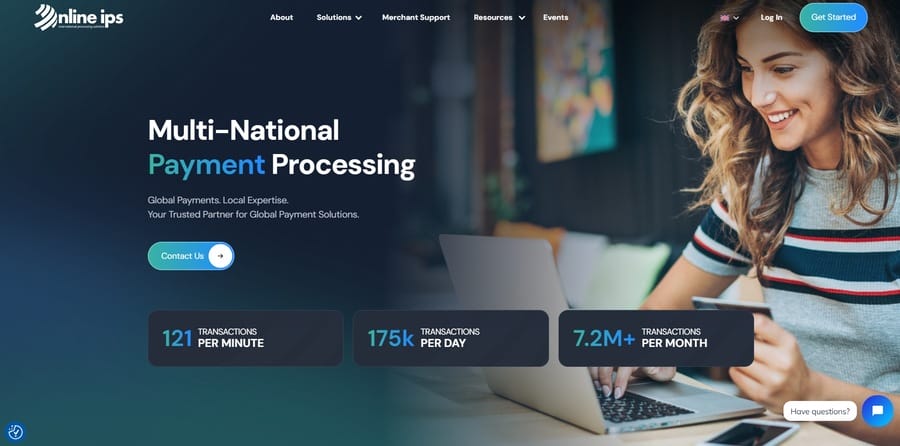
Using Google Ads, we targeted high-intent keywords and implemented bid strategies to control cost while driving relevant traffic.
On LinkedIn, we focused on reaching CFOs and payment decision-makers with tailored messaging that emphasized security, scalability and fraud prevention.
Our behavior-based and segmented targeting helped re-engage visitors and speak directly to different industry needs.
Real-time campaign adjustments, based on performance data, ensured ongoing optimization and a stronger return on ad spend.
Generate More Leads With Digital Silk
Getting tangible results from lead generation doesn’t mean implementing all of the abovementioned strategies simultaneously but taking a structured and data-driven approach that supports business growth.
Digital Silk’s experienced team of marketing specialists and branding strategies combines industry-leading lead generation practices and research-backed campaigns tailored to your unique audience and business model.
As a professional web design agency, our signature services include:
Need help generating more leads for your business?
Contact our team, call us at (800) 206-9413 or fill in the Request a Quote form below to schedule a consultation.
"*" indicates required fields


